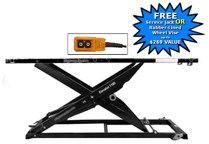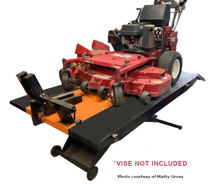Article Courtesy of PlasmaCam.com. Thanks to plasmacam.com for this articulate and thorough description explaining what plasma cutting is and the mechanics behind it! We figured this might be a nice follow up to our plasma cutter promotion special (free consumables with purchase...see previous blogpost!) for those in need of learning about this versatile device...
Plasma cutting was accidentally discovered by an inventor who was trying to develop a better welding process. Though the technology is still young today, plasma cutting is quickly changing the world as we know it. 
Plasma cutting is by far the simplest and most economical way to cut a variety of metal shapes accurately. Plasma cutters can cut much finer, faster, and more automatically than oxy-acetylene torches. Because of their effectiveness, plasma cutters - especially CNC plasma cutters (see below) - threaten to obsolete a large number of conventional metalworking tools.
How a Plasma Cutter Works
Basic plasma cutters use electricity to superheat air into plasma, which is then blown through the metal to be cut. Plasma cutters are extremely simple and require only a compressed air supply and an AC power outlet to operate. A complete plasma cutter consists of a power supply, a ground clamp, and a hand torch. The main function of the power supply is to convert the AC line voltage into a user-adjustable regulated (continuous) DC current. The hand torch contains a trigger for controlling the cutting, and a nozzle through which the compressed air blows. An electrode is also mounted inside the hand torch, behind the nozzle.
Operation -Initially, the electrode is in contact with (touches) the nozzle. -When the trigger is squeezed, DC current flows through this contact. -Next, compressed air starts trying to force its way through the joint and out the nozzle. -Air moves the electrode back and establishes a fixed gap between it and the tip. (The power supply automatically increases the voltage in order to maintain a constant current through the joint - a current that is now going through the air gap and turning the air into plasma.) -Finally, the regulated DC current is switched so that it no longer flows through the nozzle but instead flows between the electrode and the work piece. This current and airflow continues until cutting is halted.
Notes Plasma cutters are only useful for cutting metal. Non-conductive materials like wood and plastic prevent the plasma cutter from doing step 5 above. The above steps describe the operation of a contact-type arc starting plasma torch. Old plasma torch designs use high voltage sparks to bridge the gap between a fixed electrode and tip when starting the arc. These old designs are not recommended for several reasons. The only parts of the plasma cutter needing frequent replacement are the nozzle and the electrode. For this reason, these parts are called "consumables." Visit our selection of discounted plasma cutters, welders, and all related consumables here.












